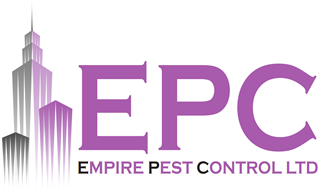
Mice Extermination in London
Empire Pest Control provide effective and long lasting mice extermination services to London’s domestic and business sectors. The measures that are required to control or exterminate mice will depend upon the extent of the infestation, as well as the species of mouse that is invading your property. Generally though, best practices will include:
- Specialist proofing to keep the property sanitised and prevent mice from diminishing hygiene practices
- Glueboards and/or mouse traps
- Baiting measures
- Monitoring the property regularly for any early signs of mice invasion
For the control and extermination of London’s mice to be successful, a level of cleanliness, proofing and a significant reduction in the overall mice population are all factors to be considered. Whilst the former two are ideal for preventing an infestation from getting out of hand, mouse extermination will be necessary if an invasion already exists. In this case, measures such as traps and controlled poisoning may be used.
Why Do I Have A Mouse Infestation?
No matter what size your domestic or business property is or how much access mice have to food, they can thrive when these conditions are limited. At the same time, you may undertake beneficial hygiene practices, only to find that because your warehouse or property stores, handles or uses food, it will still attract mice if it is not properly proofed.
Still, poor sanitation is more likely to attract a population and could lead to a more severe infestation of mice. When taking action against this pest, cutting off sources of shelter is essential, as they cannot survive as part of a large population when they have little space to raise their young or create nests.
Signs of Mice Infestation
Popular indications that you may have a mouse infestation problem include:
- Droppings – mice produce a large amount of faeces which is small and dark and can be scattered where they’ve been so check your cupboards and surfaces.
- Smear marks – they have regular routes and will leave dirty marks behind them.
- Significant damage to goods, such as holes and gnaw marks – mice chew anything and everything.
- Urine pillars – up to 4 cm high can be created by these tiny creatures if in a high infestation.
- Nests – mice reproduce up to 10 times a year so nests are an important part of their life cycle. They use shredded soft materials such as paper and card to make their nests in places like lofts, cavity walls, behind fridges, washing machines etc or under floorboards.
- Noise – being nocturnal by nature means that you’re likely to hear them scurrying about at night when your house is quiet.
- Smell – along with droppings, mice produce a lot of urine which has a strong ammonia smell and can often lead you to where they are located.
Characteristics of the Mouse
Adapted to thrive in establishments that work with food and homes, the mouse tends to make an appearance during the colder months, as they scavenge for shelter and a reliable food source. Unfortunately, once mice have made their home in your property, they can be relatively difficult to control, partly because of their swift reproduction.
On average, every year, the mouse will produce as many as six to ten litters. With such a growing rodent population, it is no surprise that much financial loss occurs as a result of contamination, whether this is foodstuffs, belongings like clothes and books, or electricals. They also pose a danger in terms of disease through their faeces and contamination.
As nocturnal rodents, mice can be hard to identify, as they are hardly ever seen by property owners. They make a habit of leaving their nests almost daily but never go more than 25 feet in most cases, depending on conditions. The signs above will help you to diagnose a mouse problem though.
Pest control measures will involve strategically placing traps close to detected mice activity, such as where they find their food. Their erratic feeding behaviour means they may leave their nest up to 200 times a night when food sources are scarce.
Description
In appearance, mice are usually brown-grey with a light underside. Large ears, small eyes and a tail that measures just under body length are three universal characteristics of mice, and they tend to take six to eight weeks to mature fully. Whilst their lifespan is short (three months to one year), as mentioned, population sizes can increase significantly during this time.
Mice and Food Premises
In particularly sensitive locations, non-toxic measures are used. Specified, internal points for bait need to be limited after an infestation has been given the all-clear, and fixings are a desired practice.
These types of sites will require in-depth reporting to consider COSHH assessments and detailed bait plans, among other recommendations.
Mice Exterminator Service London
Suffering a mice problem in your property or suspicious that your property may be home to another pest? Empire have mice exterminators throughout London and can provide effective mouse control solutions so; Call us today for more information on how we can help.


